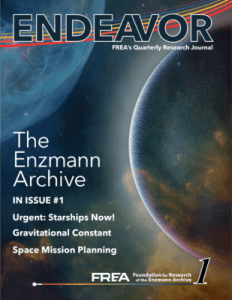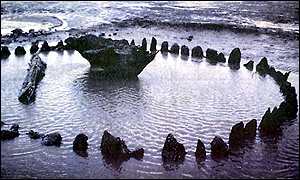Robert Duncan-Enzmann
The writer believes that all actions and reactions, all aggregations of matter, all shapes – in effect all entities and their interrelationships – are ultimately controlled by, and may sometime be described by what we currently call quantum mechanics.
Current mathematical techniques only permit mankind to describe two-body relationships as in the hydrogen atom, ionized helium, or satellite about a planet unperturbed by other bodies. Current mathematical techniques make it possible to approximate solutions to simpler multiple-body problems. Mathematical techniques, which are in essence statistical, make it possible to describe, in a limited way, the formation, metamorphoses, and dissolution (history) of such features as plasma, gaseous, and fluid vortices. Mathematics does not pretend to describe by abstractions the history of all entities of a planetary domain, stellar system, or galaxy. Approximate mathematical descriptions (abstractions) may be possible sometime in the future.
Currently, such entities as planetary domains are described with a mixture of pure taxonomy (description) and taxonomy with some measure of mathematical abstraction. In this section, a systematic approach to planetology is ventured. This incorporates available taxonomy and abstraction in a scheme that is orderly, rigorous, and sufficiently broad to provide ‘slots’ for entities that are as yet undescribed.
The first step in the technique has been to divide the matter in the planetary (or any other entities) into states of matter. It is then possible to assign the bulk of matter in such states the name of planetary zones. The states of matter and the respective zones are as follows:
Corpuscular or plasmoid: Electrospheres or electrofluxes
Gaseous: atmospheres
Liquid: hydrospheres
Solid: lithospheres
Biotic: biospheres
Stressed solids: Endospheres
The second step in the technique has been to divide the zones of terrestrial-type planets, gas-giant-type planets, comets, asteroids, and smaller entities of the Solar, or other (as yet slightly known) stellar systems, into orders. Planetary domains have been divided into eleven somewhat arbitrary orders of magnitude. It is recognized that there are orders of entities significantly larger than planets etc., so the classification has somewhat arbitrarily been extended to incorporate larger structures up to super-galaxies. These are the largest orderly structures currently known to mankind; they seem to incorporate many millions of spiral nebulae like the Milky Way. The writer does not feel that the extension upward will be as useful as the classification of entities in planetary domains, but it is an interesting speculation. The orders are listed below.
All entities within the universe can be classified into morphological orders. These orders are based on size. Coincidentally the organization of matter into entities in orders based on size is often, in addition, a classification based on forces acting to form, metamorphose, and disperse the entities. The steps in the order classification are often also steps in sequences through which matter evolves through classes of entities.
Orders:
-10 Super Galaxies
-9 Super-galactic structure
-8 Clusters and groups of galaxies
-7 Galaxies and CIS-galactic satellites
-6 Individual galaxies
-5 Galactic structure
-4 Clusters and groups of stars (globular, open, streams)
-3 Individual stars
-2 Planetary systems
-1 Individual planets, comets, asteroids
0 Zones of planets and stars
1 Hemispheric or circumplanetary features
2 Continents and oceanic domains
3 Geomorphic provinces
4 Individual mountains
5 Mass waste sequence
6 Sediments
8 Secondary molecular structure (as alpha helices)
9 Molecules (relatively simple)
10 Elements
11 Corpuscles
Dr. Enzmann’s Expanded Order Theory is published in the Encyclopedia of Geomorphology published by Rhodes Fairbridge.

To discover more of Enzmann’s Mighty Mind, get a copy of ENDEAVOR here. There are 11 in all, dive right in!
You can also find Enzmann’s unique knowledge about many subjects in our topical magazines on the home page!




